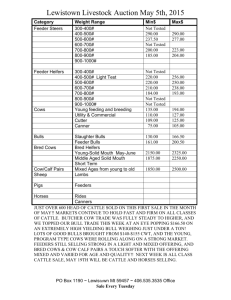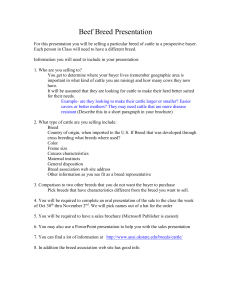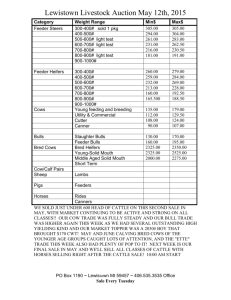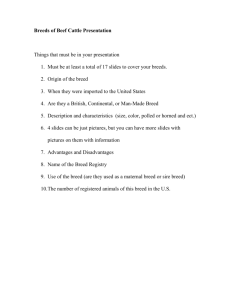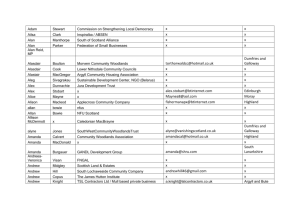The Scottish Cow
advertisement
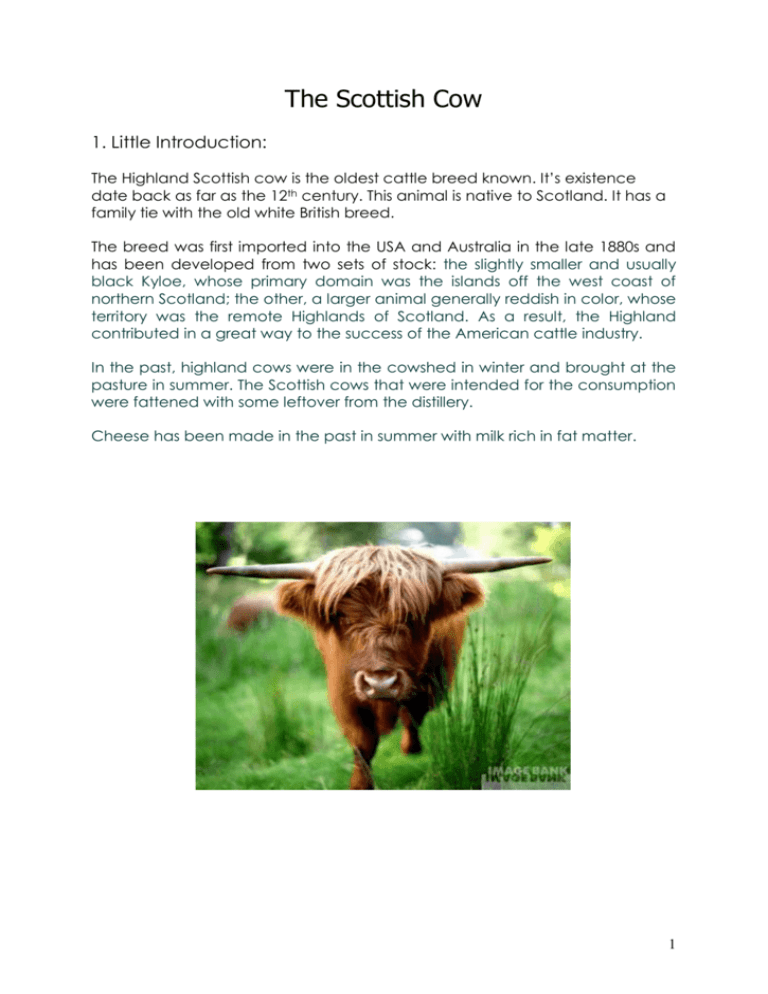
The Scottish Cow 1. Little Introduction: The Highland Scottish cow is the oldest cattle breed known. It’s existence date back as far as the 12th century. This animal is native to Scotland. It has a family tie with the old white British breed. The breed was first imported into the USA and Australia in the late 1880s and has been developed from two sets of stock: the slightly smaller and usually black Kyloe, whose primary domain was the islands off the west coast of northern Scotland; the other, a larger animal generally reddish in color, whose territory was the remote Highlands of Scotland. As a result, the Highland contributed in a great way to the success of the American cattle industry. In the past, highland cows were in the cowshed in winter and brought at the pasture in summer. The Scottish cows that were intended for the consumption were fattened with some leftover from the distillery. Cheese has been made in the past in summer with milk rich in fat matter. 1 2. Particularities The Highland cows are known for their gentleness, hardiness in adverse weather conditions and strong resistance to disease. This is due to the rugged nature of their native Scottish Highlands. It is a small kind of breed, females have a height of 1,10 m and male of 1,30 m; their weight is about 450 for females and 650 for males. They have a higher intelligence than many modern breeds of cattle and are easily halter trained. They eat plants that other cattle avoid, they are excellent browsers. In fact, Highland cattle seem to enjoy conditions in which many other breeds would perish. The meat is leaner than most beef and of very good quality and taste. Here are the prices of these cows: Mature bulls weigh 1,800 pounds (800 kilograms) in breeding condition. Mature cows weigh 1,100 pounds (500 kilograms) in breeding condition. Steers will finish at about 1,000 pounds (450 kilograms). This weight can be attained with heavy feeding as a long yearling but most breeders prefer to grow their steers on pasture and finish them at two years. The color of their hair is often brown-red, but it can also be black, grey or white. The coat can be long until 35 cm. Because of their double coat, they do not put on a thick layer of fat for warmth. Due to their long forelocks their eyes are shielded from insects so pinkeye is rare. Their thick shaggy hair also makes the Scottish cow a good breed for cold. Northern climates. Cold weather and snow have little effect on them. They have been raised as far north as Alaska and the Scandinavian countries. They also adapt well to the more southerly climates with successful herds as far south as Texas and Georgia. Their Legs are shorter than those of other cattle breeds and male and female have long horns today. In addition to the red and black of the original strains, yellow, dun and silver-white are also considered traditional colors. Other bovine diseases affect the Highland less, due to the genetic advantages they have achieved. 2 3. Reproduction The Scottish cow has an exceptional mothering instinct. The time of gestation is about 283 days. As these cows can live a very long life they can have calves until the age of 20 years.Calves are born small yet are able to survive in harsh conditions. 4. Conclusions Recently, Highlands were removed from the rare breed list by The American Livestock Breeds Conservancy and placed on a "watch" list. Today there are less than 10,000 worldwide, with many in the USA and Canada. The Highland cow is also used as an ecologic tool to maintain deep valleys in good condition as she clears up well like in the Vosges or in Alsace-Moselle. If you travel in Scotland, you will certainly see them with their friendly face, standing on the green grass. 3


